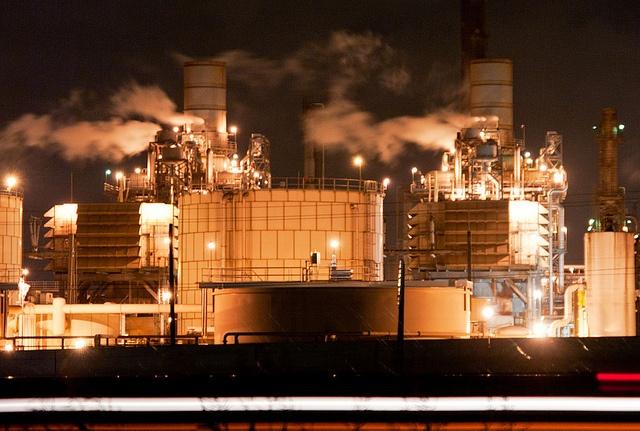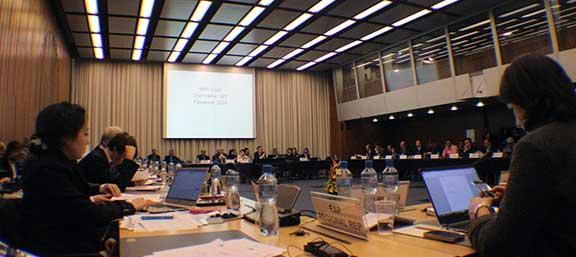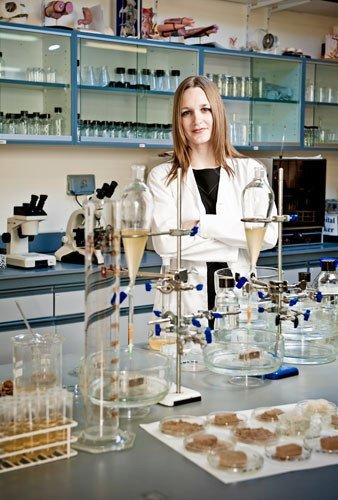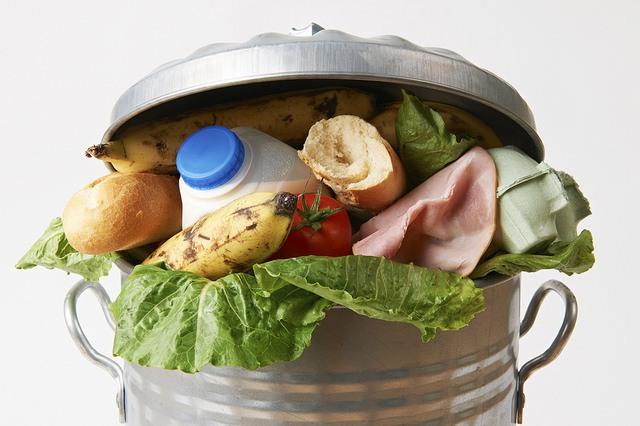New EPA Refinery Emissions Rules Linked to Environmental Justice


The U.S. Environmental Protection Agency has just issued proposed new rules for refinery emissions that will affect a total of 149 facilities and millions of residents who live nearby. According to the EPA's demographic analysis, of the individuals most at risk from refinery emissions, about half are currently classified in minority groups. According to the EPA, that's about twice the percentage of the general population.
We're waiting to hear ExxonMobil's take on the environmental justice angle -- after all, none other than CEO and chairman Rex Tillerson recently joined a lawsuit seeking to block a relatively modest fossil fuel-related project in his neighborhood -- but in the meantime the American Petroleum Institute had this to say about the proposed new rules:
... EPA has already concluded the risks associated with refinery emissions are low and the public is protected with an ample margin of safety.
ExxonMobil, environmental justice and refinery emissions risk
The Tillerson angle is particularly interesting in the context of environmental justice, when you consider that an episode at an ExxonMobil refinery back in 2012 clearly illustrates the need for tighter regulations.
According to an article last week in the Times-Picayune of Louisiana, the proposed new rules settle a lawsuit against the EPA by environmental groups, which aimed to force the agency to update its refinery rules as required by law.
The 2012 episode involved the accidental release of benzene. ExxonMobil initially characterized it as a minor 10-pound incident. Here's what really happened, as described by reporter Mark Schleifstein:
... repeated complaints from residents led to an investigation that revealed that a failure of a storage tank allowed napthalene containing benzene to leak into the refinery's sewer complex, knocking its treatment plant off line, and resulting in the release of more than 31,000 pounds of benzene.
That certainly amps up the risk factor. Schleifstein notes that 59,000 people live within 2 miles of the refinery, and there are also 38 schools and daycare centers in that area.
Getting back to Tillerson's lawsuit, the project that touched off his complaint was a proposed new 160-foot water tower. The water would be used to supply a nearby fracking site, hence the fossil fuel connection.
Aside from the aesthetic concerns about a 160-foot water tower in the vicinity of his $5 million home, Tillerson is apparently concerned about introducing noise nuisances and increased traffic in a formerly quiet, rural area.
These are perfectly legitimate concerns, but in terms of the overall risks of fracking they are relatively minor, and they are certainly a far cry from being exposed to potentially dangerous levels of benzene without your knowledge.
Proposed new rules for refinery emissions
The American Petroleum Institute got a bit ahead of itself in characterizing the EPA's refinery emission risk assessment as "low." Previous assessments were based on industry self-reporting, which as the ExxonMobil episode demonstrates are not necessarily reliable.
More to the point, the EPA is required to periodically update its residual risk assessment periodically. Residual risk refers to the risk remaining after the application of existing emissions control and monitoring technology.
Since that technology has improved considerably since the last update, a new risk assessment is required.
Also making the case for updating the rules is a long list of recent refinery emissions enforcement actions, conveniently compiled by the EPA. In the introduction to that list, the agency also anticipates the API statement with these observations:
Leaking equipment is the largest source of HAP [hazardous air pollutants] emissions from petroleum refineries and chemical manufacturing facilities.Recent monitoring shows that facilities typically emit more HAP emissions than they actually report.
Improper operation of an industrial flare can result in hundreds of tons of excess HAP emissions.
Here's some additional snippets from the EPA fact sheet for the proposed new rules.
One major element of the new rules is the first ever fenceline monitoring requirement for accidental or unintentional releases. That would provide communities with more information about episodes like the ExxonMobil benzene release. A public disclosure requirement is also part of the rule. Current monitoring applies only to stacks, flares and other points of release.
Another major improvement is that the new rules would also eliminate a current exemption for emissions related to startups, shutdowns and malfunctions.
In terms of the numbers, the new standards for cokers and storage tanks would reduce HAP emissions including benzene, tolulene and xylene by about 1,800 tons per year, and volatile organic compounds (VOC) by about 19,000 tons per year.
In addition, a new standard for improved combustion of waste gas flaring will reduce HAP by 3,800 tons per year and VOC by 33,000 tons per year. That's a low estimate, and the EPA states that the actual reduction could be "significantly higher."
As for carbon emissions, the EPA estimate on that is the elimination of about 700,000 metric tonnes per year of CO2 equivalents.
While the EPA does not foresee a significant impact on the cost of refined products to consumers, the agency does estimate that improvements in emissions control and monitoring will cost the industry $240 million up front and $40 million per year.
In effect, the rules bring us another notch closer to accounting for the full cost of fossil fuel consumption.
Image credit: Dan DeLuca
'World's Largest Clean Tech Accelerator' Gets a Boost from the U.N.


Having means and opportunity are requisites for law enforcement personnel investigating crimes. But they're also essential for individuals, groups and organizations looking to develop innovative, commercial solutions that can improve the well-being and quality of people's lives, as well as enhance ecological sustainability.
Established in 2006, the Cleantech Open “was founded on the premise that entrepreneurial innovation is the answer to the world's most pressing environmental challenges, and the key to economic growth for all nations.” Having grown into “the world's largest clean tech accelerator,” the Palo Alto, Calif.-based nonprofit today announced a partnership with the United Nations Industrial Development Organization (UNIDO) and the Global Environment Facility (GEF) – the principal financing mechanism for several keystone U.N. environmental and sustainable development agreements – to launch clean tech startup accelerators in six countries.
Working together, Cleantech Open, UNIDO and the GEF intend to launch international clean tech accelerators in Armenia, India, Malaysia, Pakistan, South Africa and Turkey. Their mission, Cleantech Open explains in a news release, “is to find, fund and foster small and medium-sized enterprises (SMEs) that can tackle the most urgent energy, environmental and economic challenges in those countries.”
Accelerating growth for clean tech startups
To date, the nearly 900 startups that participated in the Cleantech Open's U.S. Accelerator program have raised more than $900 million in capital and created “thousands of jobs,” according to the nonprofit. The partnership with GEF and UNIDO will enable the organization to expand its efforts geometrically by replicating similar initiatives in countries that stand to benefit most from creating the means and opportunity for local clean tech entrepreneurs to succeed.
As Cleantech Open states: “The partnership with the GEF and UNIDO—two global organizations that promote and accelerate inclusive and sustainable industrial development in developing countries and economies in transition—aims to nurture cleantech innovation that can address unique local challenges.”
Added Cleantech Open Executive Director Rex Northen:
“Right now, entrepreneurs around the world are developing ingenious solutions to major challenges in the generation, distribution and storage of energy, air and water pollution, waste management, new forms of transport, and sustainable construction techniques.”
The partnership with GEF and UNIDO raises Cleantech Open's triple bottom line impact potential to new heights. Working with its two new U.N. partners, “each national clean tech accelerator is led by national executing partners and teams in-country, hosted by major institutions, universities and supported by local industrial associations and key stakeholders,” the nonprofit elaborates.
Furthermore, in concert with UNIDO and the GEF, Cleantech Open will produce proprietary events, training materials and an online global platform that connects entrepreneurs to a global network of mentors, industry experts and investors. As Northen commented:
“The GEF and UNIDO are the perfect partners to clone the Cleantech Open DNA in countries that can most benefit from our proven accelerator program. Our objective is to help those entrepreneurs turn their ideas into transformative success stories."
How the Cleantech Open Accelerator works
- Each national clean tech accelerator will support startups in four technology categories in 2014: energy efficiency, renewable energy, waste to energy and water efficiency.
- Each country will leverage $1 million to $2 million in funding from the Global Environment Facility, matched by $2 million to $3 million in co-financing (including in-kind contributions) from in-country public- and private-sector partners.
- Each accelerator will identify the most promising entrepreneurs in the country and unite a diverse range of local partners with the sole objective of accelerating and supporting the best clean tech ventures in each category.
- A national competition in each country will kick off to identify the most promising entrepreneurs. Qualifying entrepreneurs will also participate in the Accelerator program, which builds the local entrepreneurial ecosystem; supports, promotes and “de-risks” the participating companies; and connects them to potential investors, customers and partners.
- In November 2014, the best clean tech ventures from all six participating countries will attend the Cleantech Open Global Forum in Silicon Valley, a major event on the clean tech calendar that attracts thousands of attendees from 30 countries. There, they will meet with technologists, corporate leaders and investors.
A boost from UNIDO and the GEF
UNIDO's guiding mission is to promote and foster industrial development that reduces poverty and enhances “inclusive globalization and environmental sustainability.” With the partnership, the Cleantech Open will be able to leverage UNIDO's worldwide presence and in-country resources.
Supported by 183 U.N. member nations, the GEF is the principal international financing mechanism for addressing global environmental issues, including providing financial and other resources in support of keystone multilateral environmental agreements (MEAs) including the U.N. Framework Convention on Climate Change (UNFCCC), the U.N. Convention on Biological Diversity (CBD), the U.N. Convention to Combat Desertification, the Stockholm Convention on Persistent Organic Pollutants, and the Minimata Convention on Mercury. Managed by the World Bank Group, it also works closely with the U.N. Environment Programme (UNEP), which manages the Montreal Protocol on Ozone Depleting Substances.
The GEF depends on contributions from U.N. member countries party to these international treaties to carry out the missions specified in their charters. The impacts of the most recent financial crisis and global recession raised concerns that contributions would fall far short of projected requirements.
Record GEF funding
Allaying these concerns to a significant extent, 30 donor countries on April 16 pledged a record $4.43 billion to the GEF “to support developing countries' efforts over the next four years to prevent degradation of the global environment.” Commenting on the unprecedented amount of funding commitments GEF CEO and Chairperson Naoko Ishii stated:
"Today's decision is a powerful signal from the global community about the importance of urgently reversing the negative environmental trends in order to ensure a sustainable future for everybody. I am extremely encouraged by the broad coalition that has come together behind the belief in GEF's ability to play a critical role in helping achieve this transformation."
With those funds, GEF will be able to support projects in more than 140 countries that address a wide range of threats to ecological health and integrity, including climate change, deforestation, land degradation, extinction of species, toxic chemicals and waste, and threats to oceans and freshwater resources, GEF explains.
"Only by integrating environmental considerations into decision making by governments, private businesses and households can we hope to make a difference in the global environment,” Mexico Secretary of Finance and Public Credit Luis Videgaray stated in a press release. “The GEF-6 effort gets under way at a critical time, and is a vital platform to help mobilize all stakeholders to play their part."
Images credits: 1.) Cleantech Open, 2.) UNIDO, 3 .) GEF
2013 Postcode Lottery Green Challenge Winner: Ginger Dosier 'Grows' Bricks with Bacteria


Ed note: This is a sponsored post on behalf of the Postcode Lottery Green Challenge
The brick is the basic building block of architecture, popular because it is modular, has a simple design and is both easy to make and use. In fact, the humble brick is used in more than 80 percent of global construction, according to architect-turned-scientist Ginger Krieg Dosier. But this classic building material has a heavy environmental toll, Dosier said in a June 2013 TEDx Talk: It is estimated that annual global brick production releases 800 million tons of carbon pollution each year.
“This is a lot of pollution from one simple material,” she said in her presentation.
Inspired by strong natural structures like seashells since she was a child, Dosier invented a process that uses bacteria to “grow” bricks and releases virtually no carbon emissions. Dosier, founder and CEO of biotech startup bioMason, was the winner of last year’s Dutch Postcode Lottery’s Green Challenge -- one of the largest and longest-running sustainable business plan competitions in the world. In its eighth year, the challenge is open to startups and entrepreneurs from all over the world to help them bring environmentally responsible products and services to the mass market. The winning business plan will receive €500,000 ($680,000) to advance its product or service, while an additional €200,000 ($272,000) will go to one or two runners-up.
“With the prize money, we will be able to achieve significant results faster and launch our sustainable bricks on a large scale. This is a huge encouragement,” Dosier said last year upon winning the Green Challenge.
Dosier became interested in developing a more environmentally friendly brick in graduate school, where she read the book, “Biomimicry,” which advocates for using natural designs and processes to solve human problems. Dosier came to believe that the next greatest material revolution would be in durable structural cements similar to ones made in the ocean like coral reefs and sea shells.
“Nature can produce materials with greater strength than [those made by] our manmade processes and with less energy, without polluting the surrounding environment,” she said in her TEDx Talk.
For example, she said, a spider can weave a web with silk stronger by weight than manmade steel.
When Dosier learned that bacteria was actually responsible for the formation of some sandstones – by producing a glue to bind together the grains of sand – she began experimenting with bacteria in a make-shift lab in the second bedroom of her apartment.
“It took years and many mistakes to grow a strong, durable, full-scale brick,” she said.
Now Dosier and her team at bioMason have perfected the brick-growing process: They start with sand – a preferred material because of its overwhelming global abundance, she said. Next, they make the cement that glues the sand together by creating a liquid solution that includes the bacteria, food for the bacteria, sources of nitrogen and calcium, and water. This solution is applied over a bed of sand in molds and repeated for five days until a solid bio-cement material is formed. Once the bricks are dried, they are ready for use.
The process also produces few waste materials, Dosier said. Once the bacteria’s food and water is cut off, they simply die. The liquid solution, which is applied to the sand through an irrigation system, is recycled in a closed-loop process. This not only saves water, but also captures the natural byproduct of the bacteria: a valuable natural fertilizer that can be marketed.
Producing bioMason’s sustainable bricks is very different than the conventional process to make clay bricks, in which clay and sand is mixed together, formed into the shape of a brick and fired at 2000 degrees Fahrenheit for 3-5 days – producing a significant amount of greenhouse gases.
Since winning last year’s Dutch Postcode Lottery’s Green Challenge, business is booming for Dosier and her team at bioMason: They’re hiring additional team members, talking to potential customers and moving to a space three times the size of their original incubator to accommodate their growing staff and expand their prototyping systems. They are also working on a pilot order for a few thousand brick pavers that will be used in a pedestrian walkway in a high-profile architecture project.
Interested in entering the Dutch Postcode Lottery’s Green Challenge?
To be eligible for the Green Challenge, a product or service must reduce greenhouse gas emissions and be ready to enter the mass market within two years. A detailed business plan and elevator pitch is due midnight (central Europe time) on June 3. Learn more details about the competition here.
“In this year’s Postcode Lottery Green Challenge, I hope to see ideas that are simple, yet impactful: Ideas that shift mindsets,” Dosier wrote in a blog post. “Perhaps a design change to packaging or a design change in the clothing consumable supply chain. Simple, yet effective ideas that have massive impact and can be executed rapidly. Good luck to all the entrepreneurs out there ready to enter the competition!”
You can also follow along on Twitter and Facebook.
Image credit: Postcode Lottery Green Challenge
Passionate about both writing and sustainability, Alexis Petru is freelance journalist based in the San Francisco Bay Area whose work has appeared on Earth911, Huffington Post and Patch.com. Prior to working as a writer, she coordinated environmental programs for Bay Area cities and counties. Connect with Alexis on Twitter at @alexispetru
How Women Are Changing the Energy Sector


By Sarah Butler-Sloss
Lack of access to clean energy is debilitating for women in the developing world – not just for the obvious reason that women and girls tend to be at home more, so are likely to suffer more from the effects of inhaling cooking and kerosene fumes.
In most countries, women and girls are also the ones responsible for gathering cooking fuel, often trudging for hours every day to collect and carry bundles of wood or other fuels and then spending hours bent over smoky fires or stoves to cook the family meal.
This sucks up vast amounts of time that could be far better spent in education, income-generating work – or simply socializing. In many countries, particularly in areas of conflict, traveling long distances to gather fuel also exposes women to risk of violence or sexual assault.
It's women and girls who, without access to radio or TV, remain trapped in traditional roles, with no alternative role models to aspire to. And because many societies still perceive women as care-givers, it’s also often women who carry the greatest burden of worry about their children's wellbeing.
The great irony has always been that, while energy could make such a difference to women’s lives, until now, few of them have been involved in the sector. Across the world, energy has traditionally been a masculine sphere. The vast majority of people who work in the traditional energy sector are men – not just running the big energy companies, but installing the supply and distribution infrastructure.
Now, however, the growth of sustainable energy solutions is beginning to change all this, breaking down the barriers to their involvement in the provision of energy.
We’re seeing many more examples of women leading clean energy businesses, and of businesses training women to sell solar equipment – and in some cases, installing and repairing it too. This is helping erode concepts of what constitutes an ‘appropriate’ job for a woman, at the same time as boosting their confidence and self-esteem.
There is also an increasing number of for-profit businesses and charities that are demonstrating huge creativity and ingenuity in increasing access to solar electricity in some of the remotest areas in the world. Solar-powered electricity means girls can study after dark and their mothers have the opportunity to do income generating activities. It allows mobile phones to be charged, giving access not just to calls and texts, but also Internet and mobile money and information about the wider world.
Modern stoves and cleaner fuels for cooking and heating relieve women from the time-consuming drudgery and danger of traveling long distances to gather wood, as well as saving time cooking and cleaning pots. There are growing numbers of socially oriented businesses around the world doing this – developing stoves that are affordable, accessible and aspirational for women.
The two finalists for the 2014 Ashden Clean Energy for Women and Girls Award, Greenway Grameen and the Sakhi Unique Rural Enterprise are both fantastic examples of this new movement.
Energy for women must be on the global sustainable development agenda
The recent announcement by the International Sustainable Energy for All Initiative that the first two years of the 2014-2024 Decade of Energy Access for All will focus on women and girls provides hope for a renewed focus on energy for women.
Right now, the proposed new Sustainable Development Goals, designed to set the world on a more sustainable development path, are currently under development. These are set to replace the internationally negotiated Millennium Development Goals, which expire in 2015. It is critical that these goals include specific, timed targets to increase women and girls’ access to clean cooking and electricity.
We must not miss this opportunity to place the empowerment of women through energy access firmly on the international development agenda.
Ashden’s #Volts4Women campaign, timed to coincide with our international conference on May 20, aims to raise awareness of this issue, which for so long has been neglected. We want to make sure that energy for women and girls is firmly on the international development agenda – and stays there. Please help us spread the word about women’s need for clean energy. Help give women power.
Greenway Grameen and the Sakhi Unique Rural Enterprise are finalists for the 2014 International Ashden Awards.
Follow #Volts4Women on Twitter.
Image credit: Ashden
Sprint to Sell iPhone Cases Made from Carbon


Imagine a cell phone case made from carbon. Soon you won’t have to just imagine. Sprint will be selling AirCarbon cell phone cases for the iPhone 5C and iPhone 5S which will be sold exclusively on Sprint.com by late May for $29.99. Sprint will be one of the first companies to use AirCarbon, and the first telecommunications company to sell a carbon-negative product using AirCarbon. The cell phone case weighs the same as the carbon that has been sequestered.
AirCarbon is made by California-based Newlight Technologies which uses a carbon capture process to convert air and greenhouse gases (GHGs) into plastic that is similar to petroleum-based plastics. Founded in 2003, Newlight was named the “Most Innovative Company of the Year" in 2013, and received an R&D 100 Award for AirCarbon in 2013 as "one of the 100 most technologically significant innovations of the year."
"We are pleased to introduce this new technology - essentially turning greenhouse gas into a plastic that has the potential to replace petroleum-based plastics," said David Owens, Sprint's senior vice president of Product. "This innovation is another example of Sprint's leadership in providing eco-friendly products to our customers.""AirCarbon offers a new paradigm in which products we use every day, like cellphone cases, become part of the environmental solution," said Mark Herrema, Newlight Technologies co-founder and CEO. "Newlight's mission is to replace petroleum-based plastics with greenhouse gas-based plastics on a commodity scale by out-competing on price and performance - harnessing the power of our choices as consumers to make change."
Sprint: A leader in telecom sustainability
Sprint, which served almost 55 million customers as of March 31, 2014, is fast becoming a leader among telecommunications companies in sustainability. Sprint was named the most “Eco Focused” wireless carrier by Compass Intelligence. Since 2009, the company has made great strides to be more sustainable: Sprint has reduced the overall environmental impact of its device packaging by 55 percent, reduced packaging volume by 60 percent and weight by 50 percent. The company also reduced product literature weight by 70 percent, water withdrawal by at least 67 percent and non-renewable energy use by at least 33 percent.
Reusing and recycling unwanted devices is important to Sprint, which has wireless recycling programs in place that keep thousands of tons of wireless equipment from ending up in the waste stream. More than 90 percent of the devices collected through the programs are reused, and any equipment not reused is recycled. One of such programs is called Sprint Buyback, and it offers customers credit for hundreds of wireless devices, even if they come from other carriers. The program is free and serves as a way for Sprint to repurpose or recycle unwanted devices.
Sprint Project Connect is another program that allows anyone to recycle cell phones, batteries, accessories and data cards for free. Sprint will accept them regardless of the carrier or condition. The company uses electronics recycling vendors that are certified from leading used electronic management certifications, so that only the best environmental methods of waste disposal possible are used. The program gives back to U.S. communities as it helps to fund and promote free Internet safety resources for kids.
Sprint is also a leader in efforts to create more sustainable packaging. In 2009, Sprint stopped using petroleum-based inks, non-recyclable plastics, and cardboard made from virgin forest products. All of Sprint’s packaging is 100 percent recyclable. Boxes are made from unbleached kraft paper with 30 percent minimum post-consumer content, and they only use soy inks and eco-friendly adhesives. Sprint also stopped using PVC and replaced it with 100 percent recycled PET plastic.
Image credit: Griffin Technology
Half of Americans Living With Unsafe Air Pollution


Next time you take a deep breath of fresh air, consider yourself lucky. Nearly half of Americans – more than 147 million people – live in counties where ozone or particle pollution levels make the air unhealthy to breathe, according to a recent report by the American Lung Association.
The 15th annual "State of the Air” report shows that while the country overall continued to reduce particle pollution -- a pollutant recently found to cause lung cancer -- poor air quality remains a significant public health concern, and a changing climate threatens to make it even harder to protect human health. Alarmingly, levels of ozone (smog) -- a powerful respiratory irritant and the most widespread air pollutant -- were much worse in 2014 than in the previous year’s report.
More than 27.8 million people in the United States live in 17 counties with unhealthful levels of pollutants, totaling 8.9 percent of the total population, the report says. Twenty-two of the 25 most ozone-polluted cities – including Los Angeles, New York City, and Chicago – had more high ozone days on average this year than the year before. Thirteen of the 25 cities with the worst year-round particle pollution reached their lowest levels yet, including Los Angeles, Atlanta, Pittsburgh and Bakersfield.
Ozone is the most common air pollutant in the country, and also happens to be one of the hardest to reduce, according to ALA. Though particle pollution levels showed improvement, ozone worsened in the most polluted metropolitan areas in 2010 to 2012 compared to 2009 to 2011. The warm summers in 2010 and 2012 contributed to higher ozone readings and more frequent high ozone days, according to the report.
Of the 25 metro areas most polluted by ozone, 22 had worse ozone problems than in the previous year. Among those measuring worse ozone problems were Los Angeles, Houston, Washington-Baltimore, Las Vegas, Phoenix, New York City, Cincinnati, Chicago and Philadelphia.
Perhaps unsurprisingly, Los Angeles remains the metropolitan area with the worst ozone pollution -- a ranking it has held in all but one of the 15 "State of the Air" reports. However, the city has managed to erase more than one-third of its unhealthy ozone days (by weighted average) in the last 15 years.
Bangor, ME, Bismarck, N.D., Cape Coral-Fort Myers, Fla., and Salinas, Calif., were named the “cleanest cities” for having zero days with unhealthy levels of ozone or particle pollution, and for being among the 25 cities with the lowest year-round particle levels.
Many areas also maintained significant strides in reducing year-round particle pollution, according to the report. Lower particle-pollution levels are a direct result of the transition to cleaner diesel engines and the cleanup of coal-fired power plants, especially in the eastern United States. Several major cities reached their lowest annual levels ever, including Philadelphia, Cincinnati and Indianapolis.
Progress also was seen in reducing short-term “spikes” in particle pollution this year. Among those measuring their fewest ever unhealthy days were Pittsburgh, Salt Lake City and San Diego.
In the report, ALA says safeguards are necessary to protect the health of the millions of people living in counties with dangerous levels of either ozone or particle pollution, which can cause wheezing and coughing, asthma attacks, heart attacks, and premature death. Those at greatest risk from air pollution are infants, children, older adults, anyone with lung diseases like asthma, people with heart disease or diabetes, people with low incomes, and anyone who works or exercises outdoors.
Here are some tips ALA have given to improve the air everyone breathes:
- Clean up power plants: The EPA needs to reduce carbon pollution, the ALA says: Ozone and particle pollution that blows across state lines must be controlled. In the next year, the Obama administration has pledged to set standards for carbon pollution from new and existing power plants.
- Strengthen the outdated ozone standards: The EPA needs to set a strong, health-based standard to limit ozone pollution, the association urges. Strong standards will drive the needed cleanup of ozone across the nation.
- Clean up new wood-burning devices: The EPA needs to issue strong standards to clean up new wood stoves, outdoor wood boilers and other residential wood-burning devices.
- Fund the work to provide healthy air: Congress needs to adequately fund the work of the EPA and the states to monitor and protect the nation from air pollution, ALA adds.
- Protect the Clean Air Act: Congress needs to ensure that the protections under the Clean Air Act remain strong and enforced.
Image credit: Flickr Andrew Hall
Based in San Francisco, Mike Hower is a writer, thinker and strategic communicator that revels in driving the conversation at the intersection of sustainability, social entrepreneurship, tech, politics and law. He has cultivated diverse experience working for the United States Congress in Washington, D.C., helping Silicon Valley startups with strategic communications and teaching in South America. Connect with him on LinkedIn or follow him on Twitter (@mikehower)
Study: Video Game Consoles to Cost Consumers $1 Billion a Year in Electric Bills


Even if you're not an avid gamer yourself, you've probably noticed: Americans, younger Americans in particular, love video games. And as the market for video games has expanded – the industry has been grossing more revenue than the U.S. movie industry since 2007 – so has the video-graphic and data processing power of video game consoles, which original equipment manufacturers (OEMs) now see as their ticket to the heart of the rapidly emerging digital home.
Digitally rendering the hyper-realism and supporting all the real-time activity of today's video games requires lots of electricity, but video game consoles are using lots of electricity even when they aren't being used. According to a new report from the Natural Resources Defense Council (NRDC) released May 16, the latest-generation video game consoles are on a pace to cost American consumers $1 billion in electricity bills this year. Moreover, 40 percent of that, $400 million, will be sucked up when the games are in stand-by mode and not being used.
That amount of electricity, according to NRDC, is “enough to power all the homes in the nation's fourth-largest city of Houston.”
Video game consoles: Sucking up the juice
Which video game consoles are the biggest energy hogs? Following up on its 2008 study of video game consoles and energy usage, NRDC researchers tested the latest generation of the most popular video game consoles, including the Nintendo Wii U, Sony PlayStation 4 and Microsoft Xbox One, to find out.
Generally speaking, NRDC researchers found that in addition to offering greater performance, the latest generation of the most popular video game consoles are equipped with many new energy-efficiency features.
That said, there are big differences between consoles when it comes to electricity usage. The Sony PS4 and Microsoft Xbox One, for instance, “consume two to three times more annual energy than the most recent models of their predecessors,” according to NRDC's new report.
Overall, Microsoft's Xbox One is the biggest energy hog among the three most popular video game consoles, “largely due to its voice command feature in standby mode." Sony's PlayStation 4 ranked second, the result, in the main, of “inefficient controller charging."
Video game consoles: Electricity vampires
Collectively, NRDC projects that even taking into account the energy-efficiency improvements likely to come in semiconductor design, the three most popular video game consoles will use some 10 billion kilowatt-hours (kWh) of electricity annually in the U.S. alone “once all previous-generation consoles in use have been replaced by new ones.”
According to NRDC, that's enough electricity to meet the needs of Houston, Texas, the fourth-largest city in the U.S., and will come at a cost to consumers of over $1 billion.
Making that a tougher pill to swallow: “Most of that energy will be consumed in the middle of the night, when the console is in stand-by mode but still listening for voice commands, like the Xbox One, or using higher power than necessary to keep USB ports active, like the PS4.”Among other key findings in NRDC's latest report on video game consoles and energy usage:
- The new consoles consume more energy each year playing video or in standby mode than playing games.
- The Xbox One and PS4 consume two to three times more annual energy than the latest models of their predecessors, the Xbox 360 and PS3.
- While the new versions are more powerful, the two- to three-fold increase in energy use is due to higher power demand in stand-by and on modes and, in the case of the Xbox One, more time switched on due to its TV viewing mode. In this mode, the console is used in addition to the current set-top box to access cable or satellite TV, adding 72 watts to TV viewing.
- The Xbox One draws less power than the PS4 in on mode. However, the Xbox One consumes a lot more energy when not in use (connected stand-by mode).
- Nearly half of the Xbox One's annual energy is consumed in connected standby, when the console continuously draws more than 15 watts while waiting for the user to say "Xbox on," even in the middle of the night or during the workday when no one is home. If left unchanged, this one feature will be responsible for $400 million in annual electricity bills and the equivalent annual output of a large, 750-megawatt power plant.
- Consoles have incorporated some good design practices, including better power scaling and well-implemented automatic power down to a low-power state after an extended period of user inactivity.
- The PS4 and Xbox One are very inefficient when playing movies, using 30 to 45 times more power to stream a movie than a dedicated Apple TV or Google Chromecast.
Improving video game console energy efficiency
NRDC believes video game console OEMs can and should do better.
“Gamers shouldn’t be locked into higher electric bills for the lifetime of their consoles just because manufacturers haven’t optimized the performance of their products,” Pierre Delforge, NRDC director of high-tech energy efficiency, whose team performed the testing, was quoted as saying. “This wastes energy and money, and causes unnecessary pollution from power plants.
The NRDC project team came up with a list of recommendations and priorities for video game console energy savings that it estimates could add another 25 percent electricity savings “beyond natural semiconductor efficiency trends.”
That would save enough electricity to power all the households in San Jose, Calif., the tenth-largest city in the U.S., and save consumers some $250 million a year in electricity bills, according to NRDC. These include:
- Reducing Xbox One power draw when in connected standby with voice command enabled.
- Reducing PS4 power draw in standby with USB ports live (when no device is charging).
- Reducing Xbox One TV-mode power, and giving users the option to watch TV when the console is off or in a very low-power state.
- On both the Xbox One and PS4, reducing video-streaming power to levels closer to that of a dedicated video player.
- Allowing users to opt out of "Instant On" and voice-command features in Xbox One's out-of-the-box setup menu, so they use this high-energy-consumptive mode only if they choose to.
Carbon spotlight falls on Kellogg and General Mills


The 'Big 10' food and drink companies together emit more greenhouse gases than Scandinavia and, if they were an individual country, would rank as the 25th most polluting, a new report from Oxfam claims.
The 'Big 10' are Associated British Foods, Coca-Cola, Danone, General Mills, Kellogg, Mars, Mondelez International, Nestlé, PepsiCo and Unilever. Climate change contributes to storms, floods, droughts and shifting weather patterns, which affect food supplies and are putting pressure on prices, causing more hunger and poverty. Oxfam projects that the price of key products like Kellogg's Corn Flakes could spike by up to 44% in the next 15 years because of climate change.
Oxfam says the companies are capable of cutting their combined emissions by 80 million tons compared to business as usual by 2020 – as much as both Mexico and South Africa have pledged. The companies are not doing enough despite the threat climate change poses to the sustained supply of ingredients they need for their products, their economic might and the need to feed a growing population. Between them, they generate £650 million ($1.1 billion) a day in revenues, equivalent to the total gross domestic product of all the world's lower income countries.
Oxfam's director of UK campaigns and policy Sally Copley commented: “By failing to cut emissions adequately the 'Big 10' are putting short term profits ahead of the long term interests of both themselves and the rest of us.”
Oxfam singled out Kellogg and General Mills as two of the worst on climate and is calling on them to lead the sector towards more responsible policies and practices. Oxfam says they should disclose their agricultural emissions and biggest polluting suppliers, set targets to cut emissions from their supply chains and speak out more to other industries and governments to address the climate crisis.
For the full story see the upcoming June issue of Ethical Performance.
Picture credit: © Mopic | Dreamstime.com
To Combat Food Waste, EU Seeks Change of 'Best Before' Dates


Food waste has long been a problem in developed and developing nations alike. In the European Union, annual food waste amounts to approximately 90 million tons—and that figure does not include agricultural waste and fish discards. Now the European Union is aggressively moving to reduce food waste by addressing the “Best Before” labeling that creates much confusion and is a large factor behind this appalling waste of food within the region.
The challenge of food waste is an important one because on both sides of the Atlantic, as much as 40 percent food is wasted. Emerging markets around the world, from the Middle East to Asia, do not perform much better when it comes to food that ends up in landfill instead of on plates. One organization estimates as much as half of the world’s food supply ends up uneaten. And despite the constant fretting over how the planet will feed 9 billion people by 2050, the stubborn fact persists that hunger and famine are not a problem of supply meeting demand—rather, the issue is one of efficient distribution. But while developing countries witness most of their waste after harvests and during food processing, wealthier nations in Europe and North America see such waste during and after food hits retail shelves. So how will the EU take action?
An open “discussion letter” ahead of an EU agricultural minister’s meeting today, calls date-labeling a large contributor to the continent’s food waste problem. Many retail employees, and consumers, often confuse “best before” and “use by” labels commonly seen on packages. But the problem with the “best before” terminology is many foods, from pasta to chocolate to vegetable oils, are still perfectly fit for consumption after that pesky “best by date” (same with many foods with the “use by” moniker, though full disclosure: This author is frugal and has an iron stomach). In contrast, the “use by” label is more pertinent for perishables such as fresh fish and dairy products ... but the reality is many consumers assume both labels have the same meaning.
For now, the EU (and common sense) advises if a food package is still intact, and the product still smells good, then do not throw the package away—but follow instructions such as “use within three days of opening.”
High-agricultural ministerial meetings aside, the upshot is manufacturers and retailers must undertake a massive education program if we as a society are going to reduce our absurd rate of food waste. Of course this is an economic problem--retailers are losing money on products that end up in the trash. And once that food is disposed, it creates environmental problems, from consuming landfill space to such greenhouse gasses as methane.
But this is also a moral problem: Too many people are still going hungry when plenty of perfectly food of fine quality ends up in dumpsters. Some food retailers are already taking action, and even sports teams have taken a creative approach beyond simply throwing food away. In the end, however, this is a problem that will require companies to look beyond their financial bottom lines and look at a bigger picture. Governments also need to rethink how they write regulations because after all, businesses are hypersensitive about preserving their brand and in the U.S., not getting sued over the consumption of spoilt food. All stakeholders must be involved, because in a world with the curious trends of rising obesity rates and food waste rates, the current system of food labeling makes little sense.
Image credit: Wikipedia (Muu-karhu)
Leon Kaye currently lives in the United Arab Emirates, where he works for the Abu Dhabi office of APCO, a communications consultancy.
MSC Sustainable Seafood Standards Yielding Economic, Environmental Benefits


From consumers through processors, distributors and fishing fleets, actors and agents spanning the entire seafood industry value chain have a long-term vested interest in making sustainable use of the ocean's bounty. Taking up that challenge and responsibility, sustainable seafood initiatives are on the rise, and they are beginning to show positive results.
The number of seafood products that earned Marine Stewardship Council (MSC) certification rose five-fold in four years and increased by 21 percent through September 2013, according to data MSC presented at its Global Commercial Network meeting during the Seafood Expo Global 2014 in Brussels.
MSC membership is broadening and deepening. The 221 certified fisheries in the MSC program and another 106 that are under assessment represent 10.5 percent of the worldwide total, according to the sustainable seafood certification pioneer. Furthermore, the MSC program is extending into new seafood markets and segments, such as sustainably sourced fish oil supplements.
Sustainable seafood: Growing awareness, growing demand
The annual net wholesale value of MSC-certified seafood products reached $4.5 billion through September of last year, with a retail value an additional 40 percent higher. Commenting on the success, Nicolas Guichoux, MSC's global commercial director, stated:
"This growth would not be possible without the participation of our partners throughout the value chain who deliver environmental choice to the consumer. MSC certified fisheries are now part of a global elite of sustainable and well-managed fisheries."
MSC-Certified Seafood: Key Figures
- Together, fisheries already certified or in full assessment record annual catches of around 10 million metric tons of seafood. This represents over 10 percent of the annual global harvest of wild capture fisheries.
- The fisheries already certified catch over 7 million metric tons of seafood. This is over 8 percent of the total wild capture harvest.
- Worldwide, more than 22, 000 seafood products, which can be traced back to the certified sustainable fisheries, bear the blue MSC ecolabel. Use MSC's sustainable seafood product finder to see what's available in stores in your country.
MSC enumerated and elaborated on the economic and environmental benefits its sustainable seafood certification program is having at its latest annual Global Commercial Network meeting.
For example, environmental gains in South Africa's hake fishery – in which some 8,300 people are employed – include quota reductions, ring-fencing of fishing grounds, by-catch management and a 90-percent reduction in seabird mortality -- the result of deploying streamer lines. Sixty-percent of South Africa's hake catch is exported, bringing in “$180 million in annual revenue and indirectly supporting a network of logistics companies, secondary processors and exporters,” MSC notes.
Overall, more than 450 fisheries' improvements have been recorded to date, details of which are due to be published this year in a second MSC Global impacts report.
"We will record more evidence of improvements for the next 10 years -- it won't be the last time you'll hear the MSC talking about the environmental impact that our partners make,” Guichoux added.
Streamlining the MSC certification process
Moving forward, MSC is finalizing a quintennial Fisheries Standard Review. It has also launched a review of its Chain of Custody, whereby MSC-certified seafood is traced from fishery to market.
Looking to simplify, streamline and reduce the costs of MSC certification, the organization is also undertaking “a speed and cost review.” As MSC Chief Executive Rupert Howes stated:
"The improvements that we're looking to put to the board could potentially reduce the costs of engagement by fishery clients by up to 50 percent. There are costs, but there are also benefits and they have to be looked at together."
Gaining credibility for MSC's science-based approach
MSC's inclusive, science-driven approach to certification, and its ability to communicate that effectively to gain credibility and trust among participants across the seafood industry value chain, have been keys to MSC's success to date, Howes highlighted.
"MSC 's standard for environmentally responsible and sustainable fishing is science-based. Part of the success of the program and the momentum behind it is that people have confidence in that standard - it has to be a high bar to underpin the sustainability."
Added Jari Latvanen, chief executive officer of Findus Nordic: "The food business is all about building trust with consumers and consumer awareness of sustainability is increasing. It's all about making more sustainable choices. From that perspective, MSC is a great tool to make the choice when buying or shopping for fish. "But we have to put more effort into the brand. Yes, we need the MSC's third-party verification that we are sourcing sustainably, but then the brand needs to do the talking and build the relationship with the consumers. In order to get the message across we need to be really single-minded."
Expanding MSC: Asia and tuna
With consumer awareness and preference for sustainable seafood high in Europe and North America, the MSC program is beginning to gain traction in Asia, where MSC sees its greatest growth potential.
"In Japan, there's already engagement, and an increasing demand for MSC labelled products," Howes said. "We're even seeing the start of that in China -- it's very early stages, but the prevailing view is that in most major markets in the world, people are demanding sustainably sourced product. It has grown so fast in the past five years and we'll see it accelerate in Asia in the next few years.
When it comes to the most popular and widely caught wild fish in the world, tuna is No. 1. That makes tuna a marked species for fishing fleets the world over.
Growing concerns about over-exploitation of tuna fisheries, particularly in the Western Pacific, has been high up on the minds of those involved in negotiating international fisheries agreements. Hans Brus, managing director at Pacifical, sees great potential for MSC-certifed tuna to help forge a resolution.
However, when it comes to tuna, “you don’t see big numbers of MSC certification,” Bruns stated.
“It’s worrisome. The MSC certification that I’m working with in PNA countries have fisheries worth more than 400,000 metric tons of MSC-eligible fish, which comes down to more or less 5 percent of the volume of MSC-eligible catches in the world.”
Spanning a vast area of the western Pacific Ocean, the eight PNA island nations account for 25 percent of the global tuna catch. As Bruns continued:
"There is a massive demand in the world for this sustainable tuna. But none of that is coming to the market. We’ve been certified with a 'Chain of Custody' certification for almost one and a half years and we’ve only been able to reach 0.2 percent of the volume. Retailers in the US and Europe are asking for this tuna to come to the market and not even 0.5 percent reaches the market.”
3p has been covering trends and developments in sustainable seafood extensively of late. For more, check out our Sustainable Seafood sponsored series.
Image credit: Pexels